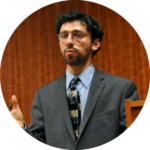
First Jewish presence: 11th century; peak Jewish population: 535 in 1890; Jewish population in 1933: 269
Speyer’s medieval Jewish community maintained a synagogue, a cemetery (both were consecrated in the 11th century) and a mikveh, the last of which was built before 1128. Another synagogue was inaugurated in Altspeyer (Old Speyer) in 1104, and in 1150 the rabbinates of Speyer, Worms and Mainz (or the SHUM communities, according to the Hebrew acronym) joined forces in creating a high court for the Jews of Germany. The Jews of Speyer were persecuted in the crusades of 1096 and 1195, in 1282 and 1343, and in the Black Death pogroms of 1348/49. By 1500 or 1529, as a result of the expulsions of the 14th and 15th centuries, no Jews lived in Speyer. It was only after 1544 that individual Jews were allowed to settle there, albeit under heavy restrictions. A new Jewish community was established in 1621—47 Jews in 1622, 116 in 1625—but it, too, was expelled in 1688. The modern Jewish community developed during the late 18th century, when the French occupying authorities permitted Jews to settle in Speyer. Available Jewish population figures are as follows: 155 in 1823, 209 in 1830, 535 in 1890, 520 in 1900, 335 in 1825 and 269 in 1930. Of the 122 Jewish households registered there in 1900, 75 were headed by merchants, 14 by industrialists, four by artisans , four by physicians, one by a professor, one by a teacher and 23 by indigent Jews who lived off charitable allowances. Twelve Speyer Jews died fighting for Germany in World War I. After 1811, services were conducted in the community chairman’s home. On June 24, 1837, the community inaugurated a synagogue (on the former St. Jakobskapelle) whose premises included a mikveh (closed in 1875) and a school; the house of worship was enlarged in 1866 and renovated in 1893 and again in 1913. Speyer’s medieval cemetery was confiscated after the expulsion of 1435. The modern community consecrated two cemeteries: the first, located in St. Klara Kloster Weg, in 1829; the second, located inside the city’s general burial grounds, in 1888. Other communal institutions included a school (founded in 1829) whose teacher also served as chazzan and shochet; recognized as a public institution in 1858, the school had 46 pupils on its register in 1897. In 1933, several Jewish associations and branches of nation-wide organizations were active in the community, which belonged to the district rabbinate of Bad Duerkheim. Well into the Nazi period, in July 1936, the community was authorized to establish a Jewish elementary school. Many local Jews left Speyer as a result of the anti-Jewish boycott, but 36 Jewish-owned businesses were still active there in June 1938. On Pogrom Night, rioters burned down the synagogue building, but not before stealing valuable rugs and ritual objects. Jewish homes were ransacked, the cemetery was desecrated and local Jewish men were sent to prison, where 23 were forced to sign over their property to the Nazi Party before being sent to Dachau. After the pogrom, the remaining Jews established a prayer hall in a private residence at 3 Herdstrasse. Speyer’s Jewish population fell from 218 in 1938 to 73 in 1939; most of these Jews emigrated from or relocated within Germany. Fifty-one local Jews were deported to Gurs on October 22, 1940, after which only nine Jews (patients at the hospital or those who were out of town on the day of the deportation) remained in Speyer; of these, one survived the war in hiding. At least 42 Speyer Jews perished in the Shoah. Founded in 1996, Speyer’s new Jewish community consecrated a cemetery in 1999 and hired its first rabbi in 2002. A memorial designed by Ludwig Kern commemorates the destroyed synagogue.Yaakov Borut
Copyright: Pogrom Night 1938 - A Memorial to the Destroyed Synagogues of Germany/ germansynagogues.bh.org.il
Notes
Sources: Alemannia Judaica, www.alemannia-judaica.de Geschichte der Juden in Speyer, [publisher] Bezirksgruppe Speyer des Historischen Vereins der Pfalz, 1981., The Encyclopedia of Jewish Life Before and During the Holocaust, Shmuel Spector [Ed.], [publisher] Yad Vashem and the New York University Press, 2001. www.jgs-online.de/html/geschichte.html
Details
| Date Added | May 19, 2020 |
|---|---|
| Category | Residential |
| Country | DE |
| State | Rhineland-Palatinate |
| City | Speyer (Speier, Spire, Spires, שפיירא, שפייר) |
| Exhibits | Pogrom Night 1938 - A Memorial to the Destroyed Synagogues of Germany |
Have additional information, photos, connections, or other resources to contribute?
Help Us in the race against time to time document Jewish history!






